
Brantford is a city in Ontario, Canada, founded on the Grand River in Southwestern Ontario. It is surrounded by Brant County, but is politically separate with a municipal government of its own that is fully independent of the county's municipal government.

Grand River Transit (GRT) is the public transport operator for the Regional Municipality of Waterloo, Ontario, Canada. It operates daily bus services in the region, primarily in the cities of Kitchener, Waterloo, and Cambridge, alongside the Ion rapid transit light rail system which began service on June 21, 2019.

The Hamilton Street Railway commonly known as the HSR is a public transport agency in Hamilton, Ontario, Canada. The name is a legacy of the company's early period, when public transit in Hamilton was primarily served by streetcars. Although streetcars are no longer used in the city today, the HSR operates bus and paratransit services, with a ridership of 21 million passengers a year. The HSR uses the Presto card as its method of fare payment, allowing for connections with GO Transit and other transit systems in the Greater Toronto area.
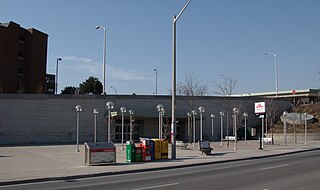
Leslie is a station on Line 4 Sheppard of the Toronto subway system. It is located at 1209 Sheppard Avenue East at Old Leslie Street in Toronto, Ontario, Canada. It was opened in 2002. Wi-Fi service is available at this station.
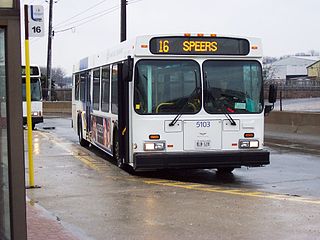
Oakville Transit is the public transportation provider in Oakville, Ontario, Canada since 1972. It is a department of the town and a member of the Canadian Urban Transit Association. It offers the typical conventional bus service, and a para-transit service, called care-A-van, for those unable to use the conventional service. The care-A-van takes riders directly to the address they desire.

Burlington Transit is the public transport provider in the city of Burlington, Ontario, Canada. Services began in September 1975, after the city had been served by neighbouring systems including Hamilton Street Railway (HSR) and former subsidiary Canada Coach Lines, as well as "local" services to and from Toronto once provided by Gray Coach Lines and GO Transit along Lakeshore Road.

The North Yonge Railways was a radial railway line operated by the Toronto Transportation Commission from 1930 to 1948 between Glen Echo (Toronto) and Richmond Hill. The line was created by reopening the southern portion of the TTC's Lake Simcoe radial line that had closed in 1930.

Burlington GO Station is a railway station and bus station in the GO Transit network, located at 2101 Fairview Street in Burlington, Ontario, Canada, just south of Queen Elizabeth Way between Guelph Line and Brant Street.

The London Transit Commission (LTC) is responsible for the operation of the public transit system on behalf of the City of London, Ontario, Canada. It offers the typical conventional bus service, and a para-transit service, for those unable to use the conventional service. In 2014, annual ridership totaled 24.1 million. The LTC has 27 regular bus routes, six express routes, three school-year-only routes and six community bus routes.

Niagara Falls Transit operates the public transport bus services in Niagara Falls, Ontario, Canada.

GOVA, formerly known as Greater Sudbury Transit, is a public transport authority that is responsible for serving bus routes in Greater Sudbury, Ontario, Canada and area. The network is the largest in Northern Ontario, comprising 41 routes operating between the hours of 5:00am to 10:00pm for regular service and from 10:00pm to 2:00am for night service. Due to the increase in ridership the service has been approved for articulating buses primarily used for the largest routes and during rush-hour times. The annual ridership for the year of 2014 was recorded at 5 million passengers at an estimate of 16,000 daily.
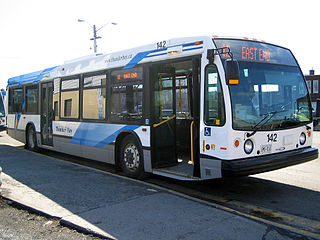
Thunder Bay Transit is the public transit operator in Thunder Bay, Ontario, Canada. It was formed in 1970, after the amalgamation of the cities of Port Arthur and Fort William and their respective transit agencies. Thunder Bay Transit is a member of the Canadian Urban Transit Association.

Peterborough Transit is the public transport operator for the City of Peterborough, Ontario, & Township of Selwyn, Ontario.

Chittenden County Transportation Authority (CCTA) was the public transit system headquartered in Burlington in Chittenden County, Vermont. CCTA served the communities of Burlington, Essex, South Burlington, Winooski, Shelburne, Williston and Milton. As well as providing regular bus routes to these member municipalities, CCTA also served parts of Colchester and had express routes for commuters travelling between Burlington and Montpelier, Middlebury, and St. Albans.

Kingston Transit operates the transit service in Kingston, Ontario, Canada as well as to the neighbouring community of Amherstview, in Loyalist Township. Major transfer points are at the Kingston Centre, Downtown Kingston, Cataraqui Town Centre, and Gardiners Town Centre.

Sault Ste. Marie Transit Services is a local public transportation service serving the city of Sault Ste. Marie, Ontario providing seven major bus routes and two community bus routes serviced by a fleet of 27 buses and 2 minibuses. The Parabus service consists of 11 vehicles.
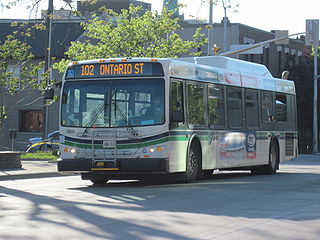
St. Catharines Transit (SCT) provides bus service to St. Catharines, Ontario, and the neighbouring city of Thorold. The St. Catharines Transit Commission took over operation of transit services within the city from Canadian National Transportation in 1961.

Owen Sound Transit provides local bus service and specialized transit for the city of Owen Sound, Ontario, which is located at the southwest end of Georgian Bay.
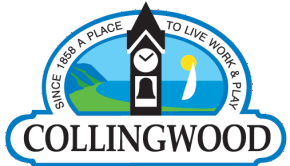
Colltrans is the municipal transit system in the Town of Collingwood in Central Ontario, Canada. Although this is a small system, running only three routes on 30 minute loops from the downtown terminal, it provides service to the community seven days a week, with the exception of statutory holidays. The terminal is an outdoor curbside location on the southeast corner of Second Street and Pine Street with no facilities other than two bus shelters. Fares are $2.00, with students receiving a 50 cent discount and children riding for free.
Cobourg Transit is a fully accessible community transit system that serves the Town of Cobourg, operating with a fleet of diesel buses. The buses are separated into two areas on the interior, the front having low floors with seating reserved for accessibility access if needed, and poles to help riders safely stand. The section behind the second door is raised by some steps, and being just seating without much open space.





















